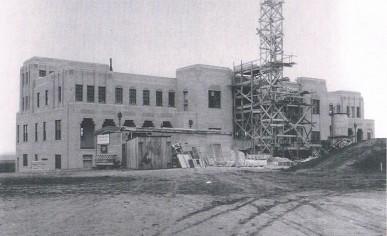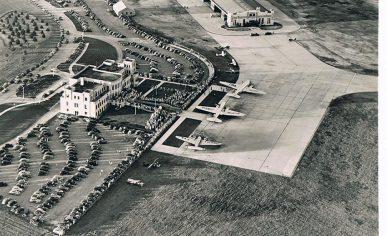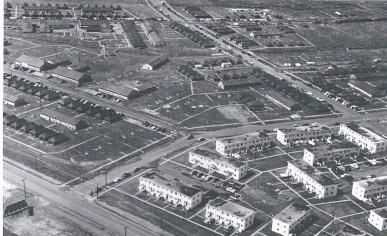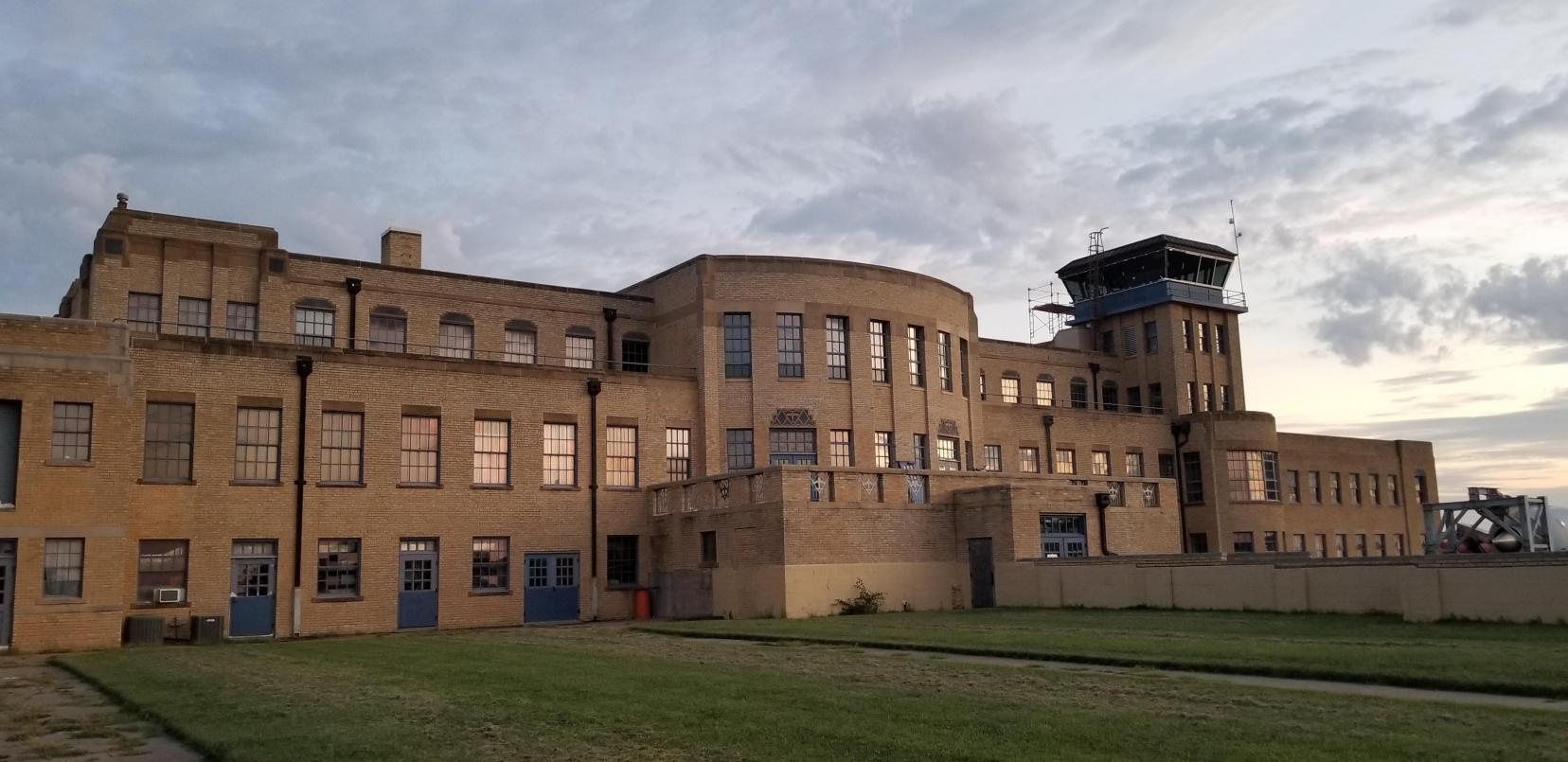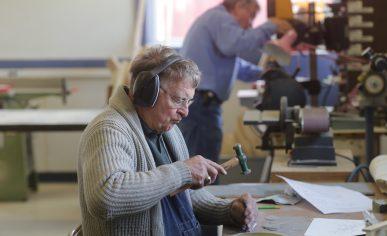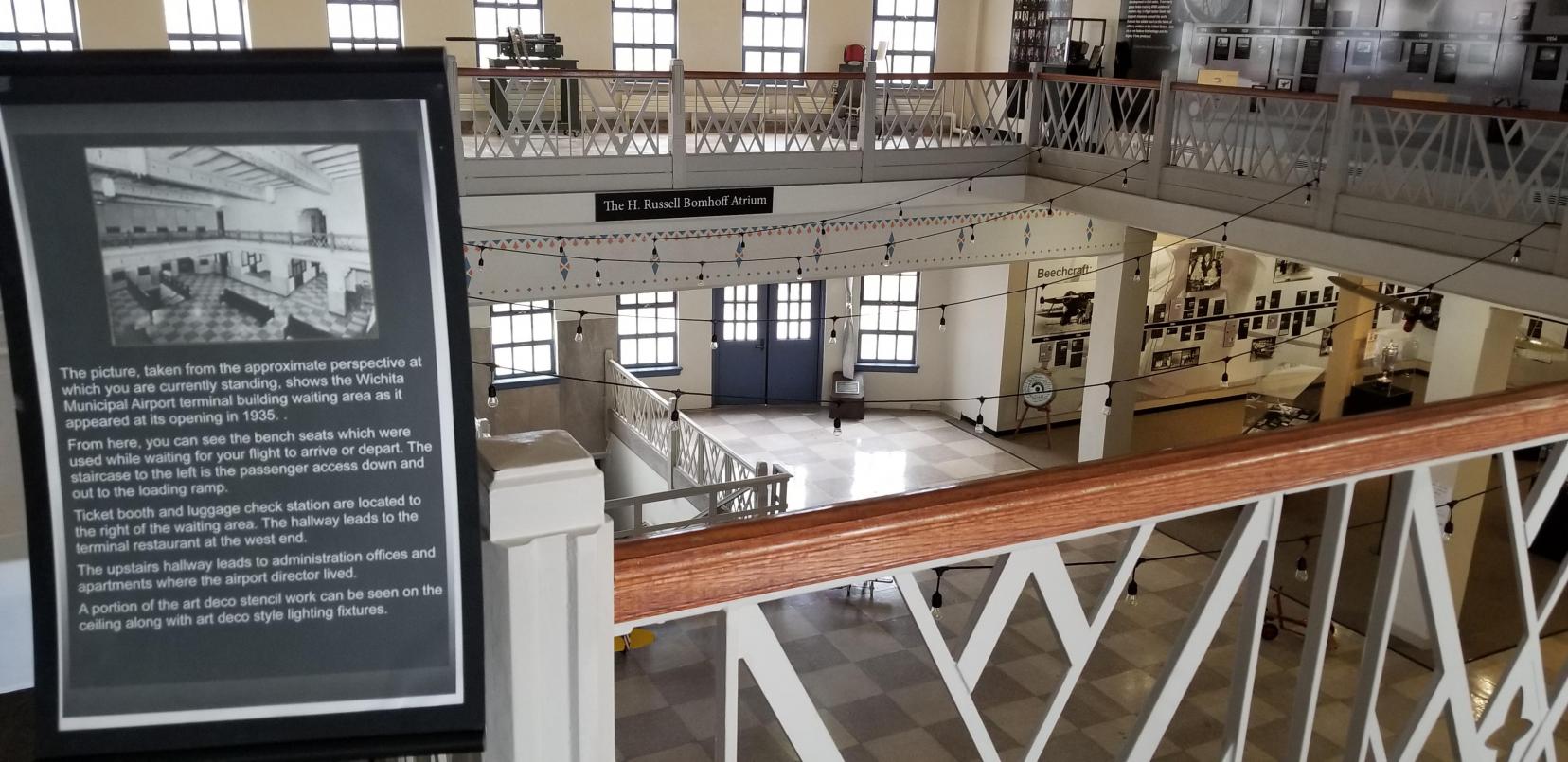History of the Building


A Treasure Trove of History, in a Historic Setting
The importance of the Kansas Aviation Museum building to the glory days of Kansas aviation cannot be overstated. Its grand art-deco style appeals both to the aviation community and to anyone interested in historic preservation.
This isn’t the first time the building has been in transition. The airport site, known then as Wichita’s “California Section,” was identified in the 1920’s by then-City Manager L.W. Clapp. In 1927, the city purchased 640 acres of buffalo grass sod. The land, a square mile east and south of 31st South and Oliver, was still nothing more than prairie when the first air show was held on the site in August 1924.
Breaking Ground
In June 1930, Clapp turned the first spade of dirt to break ground on construction of the administration building. Within a year, financial pressures placed on local and state government forced a work stoppage and the partially completed building stood idle. By 1934, money and manpower was available through the New Deal and the Works Progress Administration, allowing construction to resume. The building was finally dedicated on March 31, 1935.
The upper control tower was added in 1941. Tower operators used light guns that flashed red and green warning lights to signal planes. Mary VanScyoc was the nation’s first female air traffic control operator, working in the tower beginning in 1944. She was on duty when the airport’s main hangar, used as an administration building while construction continued on the terminal, burned down in 1945. She spotted the burning hangar during her shift, closed down the airport and stopped all air travel coming in or out. You can see the entire city from the tower, including excellent views of McConnell Air Force Base, Boeing and the museum’s own ramp.
Another Plane Every 90 Seconds
In its heyday, Wichita Municipal – ICT in aviation parlance – was a major mid-continent stopover for airlines. During the 1940’s, it was one of the busiest airports in the nation, with tower operators managing the constant stream of incoming and outgoing commercial flights. In 1944, a take-off or landing occurred every 90 seconds.
Wichita was also a major destination for nearly every aviation luminary of the times. Charles Lindbergh, Kansas’ own Amelia Earhart and many other celebrities crossed the ramp, admired the beautiful art deco terminal and dined in its cafeteria. The story is even told that Fred Astaire once entertained fellow passengers by dancing in the atrium while awaiting a flight.
Wartime Expansion
A wing was added in the 1940’s at each end of the original terminal, in part to accommodate the War Department’s Army Procurement Division, which used a large part of the building throughout World War II. From this site, the military supervised the Stearman Company’s work on the Kaydet trainer being built across the street at what is now Spirit AeroSystems.
World War II brought an explosion in aviation manufacturing in Wichita, including major efforts by Boeing to build bombers and other aircraft for the war effort. After the war, Boeing’s central presence in U.S. defense strategies meant continued economic benefits for Wichita, but also led to the decision to relocate the city’s airport.
Answering the Call
In January 1951, the United States Air Force announced its intention to establish a base large enough for 6,500 personnel in Wichita in just three weeks. Shortly after the announcement came word that the USAF would take over the Wichita Municipal Airport for pilot training on B-47s. All non-military operators were asked to stop using the facility as soon as possible, with the exception of commercial airline traffic. Construction soon began on what is the current Wichita Dwight D. Eisenhower National Airport and by 1954, all non-military traffic including commercial airline traffic moved to the new airport.
The USAF and the Kansas Air National Guard used the former Wichita Municipal Airport administration building for the next 30 years. During much of that time, it served as Building One of McConnell Air Force Base. Halls previously walked by Gregory Peck on his way to a waiting airline were redesigned into office space. The restaurant, which formerly fed such notables as Howard Hughes and Wiley Post, likewise became offices. By 1984, the building was no longer needed. The doors were locked and the building abandoned.
A Perfect Match
At the same time, the Wichita Aeronautical Historical Association was searching for a facility in which to open a museum. The former municipal airport terminal seemed the perfect choice. The property was eventually acquired by the City of Wichita and is currently being leased to the museum’s Board of Trustees. Volunteers entered the building in the late 1980s with wheelbarrows and shovels and began the arduous cleaning task. The museum opened on April 19, 1991, to showcase Kansas aviation history.
The museum houses a world-class collection of historic, significant and one-of-a-kind aircraft and aircraft engines; a huge archive with thousands of records, schematics, books, photos and more; and a wide range of additional aviation memorabilia. It also is home to the Kansas Aviation Hall of Fame – an impressive line-up of aviation heavyweights by any measure: state, national or worldwide.
Fulfilling Our Potential
Building on this solid base, the museum is tackling its next challenge – to build an aircraft display facility to protect and display its priceless collection of preserved and meticulously restored aircraft, and to transform the interior of the historic terminal building into a center for aviation history, research and education to match its irreplaceable assets and to do justice to Wichita, the Air Capital of the World.
Already, dozens of volunteers bring hundreds of years of aviation knowledge and expertise to the museum, painstakingly restoring aircraft or performing countless other tasks to keep the museum operating and improve the experience for visitors. But there’s always a need for more.
The Journey Continues
In addition, many individuals, organizations and governments have made generous donations to bring the museum to where it is today. Much more is needed, however, to complete the mission. Become a member or to find out how you might contribute to the cause.
Meanwhile, please come visit. You’ll be amazed and entertained, and you’ll leave with a much better understanding both of aviation and of Wichita’s vital role in aviation history.


